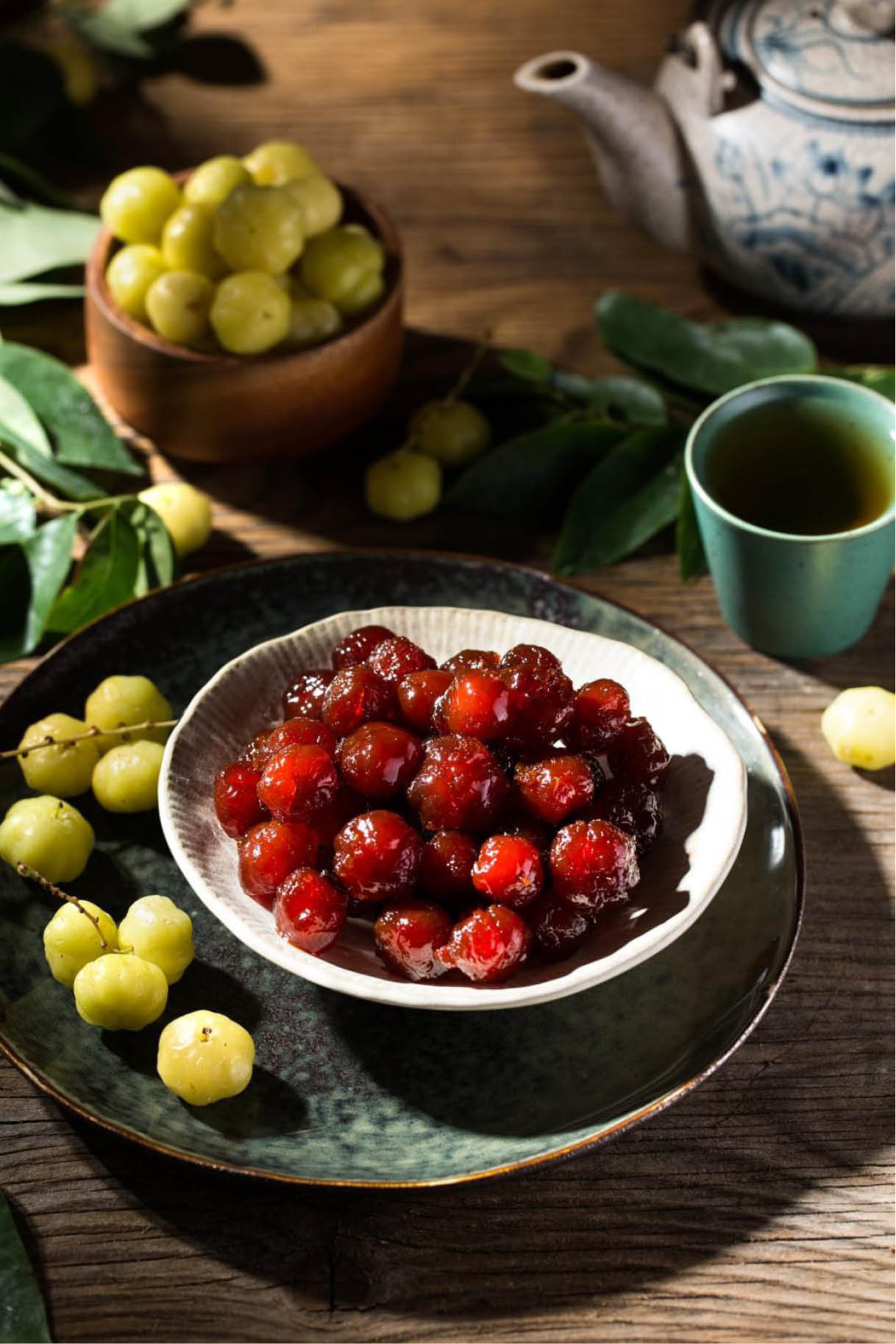The childhood sweet
Instructions to make about 30 kinds of traditional sweets for Vietnamese Tet were presented in the book, including sugar-crystalized ginger, preserved orange peels, preserved winter melons and lotus root, as well as kumquat jam.

Childhood-recalling gooseberry jam
To complete the book, the author Nguyen Thi Phien has spent most of her time researching to find out the best recipes for Hue specialties, especially the Hue-styled sweets as the indispensable sweet during the Vietnamese Tet.
She also passed the knowledge on her daughter Do Thi Phuong Nhi, who is the co-author of the book. They were also the co-authors of Hue Delicious Dishes, which received good reader reviews.
For each kind of sweet, the authors described minutely the ingredients, the preparation steps, the requirements of the products. They also shared the tips to make the product look more eye-catching.
I have been particularly impressed by the way the authors described how gooseberry jam was made. It was surprising to see the green color berries turn red after they were sweetened.
It reminds me of my childhood when I used to ask my mother to buy some gooseberry jam sold at the school gate. It was very tempting for us then to see the sweets and snacks with eye-catching colors. Moreover, the taste of the gooseberry hardly makes me forget.
“It is laborious to complete a batch of sweet. It includes a careful choice of ingredients, a timely and right preprocessing and a perfect preparation to complete a batch. There are skills and techniques that can only be discovered when you make it on your own. There are also tips for making a tasty batch of sweet,” said Do Thi Phuong Nhi.
Reminiscence
Not only is the book a good guide for recipes of various kinds of sweet, but it is also a link between now and then. The description of each kind of sweet which embeds the sentiment of the authors is like a story they share. This makes me reminisce the family union during Tet holiday in my childhood.
It was written in A reminiscence of ‘Mut Tet’ like this: “I remember the days before Tet when it was still cold with non-stop drizzle. My mother prepared jars of sugar-crystalized ginger and orange peels, which served as good desserts and helped us keep warm. There was also a flow of heat that came from the kitchen during the lunar December, that is, the heat from the pot of sweet.”
“I still remember the flavors from the pots of sweet. It was sometimes the pungency of ginger, the good smell of pineapple and kumquat, or it was sometimes just the smell of the smoke from the coal stoves. Once I recall these memories, I often feel moved to tears, though there is no longer coal stove smoke now.”
The sweets that the mother made were carved so deep in their memories that once the authors recall the old days or make the sweets, they feel as if the mother and family were beside them. The underlying message in the book is realizable: what ever we do, family is the first thing in our mind anywhere, anytime.
This is an excerpt in “Mother made sweet for Tet”: “I nostalgically imagine the warm kitchen of the old days. In late fall, the bamboo shelves were full of green winter melons covered with white lime. Next to it was a basket of sweet potatoes. The basket of carrots was most eye-catching. All made the kitchen colorful. Only the scoop of lime water was humbly quiet in the corner.”
The atmosphere of making sweet for Tet was cozy and memorable. The authors wish the readers of the book would spend some time learning to make the sweet for Tet and other delicious dishes so that the next generations could have beautiful memories of the love and coziness of their family.
By Bach Chau